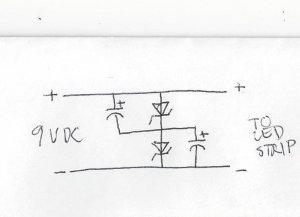I want to use a couple super capacitors in series and from what I was told was to use Zener diodes as a balancing component. The two super caps are 5 volt 1F and the two zener diodes are rated at 4.7 volts. The supply is 9 volts DC and here is a quick drawing of what I have in mind.

Any thoughts as to whether this is correct to insure that the caps only get 4.7 volts and are balanced, thanks.

Any thoughts as to whether this is correct to insure that the caps only get 4.7 volts and are balanced, thanks.

